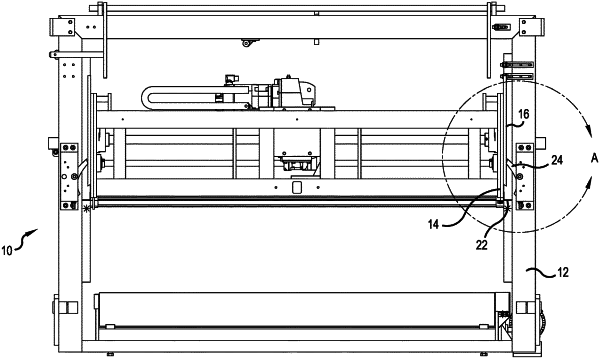| CPC E05B 47/004 (2013.01) [E05B 65/00 (2013.01); E05B 63/22 (2013.01); E05B 65/0021 (2013.01)] | 20 Claims |

|
1. A lockout device for selectively blocking linear movement of a movable frame member relative to a fixed frame member, the lockout device comprising:
a lock tab pivotably mountable to the fixed frame member adjacent to the movable frame member and having a contact surface configured to slidably engage a slide surface of the movable frame member when the lock tab has a first orientation, the movable frame member including a stop surface at one end of the slide surface;
holding means for releasably holding the lock tab in a second orientation with the contact surface spaced from the slide surface; and
a body mountable to the movable frame member and configured such that movement of the movable frame member in a first direction relative to the fixed frame member causes the body to contact a first portion of the lock tab and pivot the lock tab into the second orientation and movement of the movable member in a second direction relative to the fixed frame member causes the body to contact a second portion of the lock tab and pivot the lock tab into the first orientation,
wherein the lock tab has a third orientation in which an end of the lock tab contacts the stop surface to prevent movement of the movable member in the second direction.
|